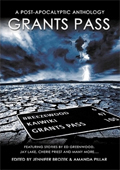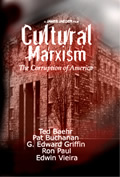NATIONAL
HERITAGE AREAS: THE LAND GRAB CONTINUE
PART 2 of 3
by
Tom DeWeese
October 23, 2012
NewsWithViews.com
49 Heritage Areas so far
There are 49 National Heritage Areas across the country so far – with several more, including the proposed Crooked Road, now being considered. Cooked Road, if legislated, will affect 19 Southern Virginia counties. That’s a massive area to cover.
Let me tell you what I know about a few of the existing Heritage Areas and paint a picture of what you might expect from the proposed Crooked Road. Here’s just a few tidbits.
The entire city of Baltimore is a National Heritage Area.
The entire State of Tennessee is covered by the Tennessee Civil War National Heritage Area.
In Waterloo, Iowa, which is a major part of the nation’s breadbasket and home of John Deer tractors, Silos and Smoke Stacks Heritage Area was sold as a means to “honor” the farmers.
Since its creation, not much has changed for farmers inside the Heritage Area. There has been no focus by its leaders to actually help farmers by keeping taxes down or helping them compete with oversees competitors. Instead, they are essentially putting American farm land in a museum.
But Waterloo’s slum lords who owned dilapidated buildings and empty store fronts in the downtown area did receive massive taxpayer funding to fix up their buildings and raise their rents.
There
are strict controls on use of the buildings, including how they can
be repaired or upgraded. Grants flow like water to special interests
in the name of historic preservation. There are educational programs
paid for by taxpayers for such vital subjects as -- why manure is important
to farm life. And in the process, downtown Waterloo has been designated
as an historic area.
There’s only one problem -- nothing of historic significance ever
happened in downtown Waterloo. As
usual, follow the money.
Along the Mississippi River there are two Heritage Areas, Mississippi Delta National Heritage Area and Mississippi Gulf Coast National Heritage Area. Now here is a region rich in history. There must be all kinds of good things happening along the mother of all rivers.
Well, today you won’t find people participating in one of the grand historic traditions of the river – living on river boats. There were once whole generations of river people living on such boats. Talk about American Heritage – right out of Mark Twain. But, back in the 1990s, as part of Bill Clinton’s American Heritage Rivers Initiative, those living on house boats were moved off the river. Certain other boat traffic and river activities were also curtailed. It was all in the name of environmental protection, of course.
In addition, the traditional flood plain designations were moved to an extreme distance from the river, making it impossible for existing homes to get flood insurance, and stopping any further building along the river. This was land use planning – right out of the Sustainable Development plan and the Wildlands project. So, the Heritage Areas were used to honor what? Certainly not life on the river. They are essentially putting the Mississippi River in a museum.
In West Virginia we find the National Coal Heritage Area. Introduced in 1996 by Congressman Rahall, it was sold as a way to honor the coal industry.
Apparently, Rahall thought that since the miners have all lost their jobs to environmentalism, perhaps, he can make up for it by throwing a few extra bucks their way to give tours of their bankrupt area.
I will make this challenge – just try to mine a lump of coal inside the National Coal Heritage Area. Not on your life. Restricted. Taboo. In short, they have put West Virginia coal in a museum. Do you get the picture?
As I said, these examples are just tidbits on information I’ve picked up over the years as we‘ve watched the spread and development of National Heritage Areas.
The Journey Through Hollowed Ground
But let me tell you about one that I know of personally - because I live in it. Not only that, I led the attack to stop it and succeeded for more than three years before we were betrayed by two Republican Members of Congress.
It’s called the Journey Through Hallowed Ground Heritage Area. Much of what I am about to tell you is taken directly from Congressional testimony presented by the American Policy Center’s former Legislative Director, Peyton Knight.
The Journey Through Hallowed Ground Heritage Area created a 175 mile long federal corridor, encompassing portions of Virginia, Maryland and Pennsylvania. Of course it was sold as a means to honor and protect some of the most precious historic areas of the nation, running from Jefferson’s Monticello to the Gettysburg battlefield.
Chief Sponsor was Virginia Republican Congressman Frank Wolfe, who promoted it saying, “The Journey Through Hallowed Ground Corridor holds more American history than any other region in the country and its recognition as a National Heritage Area will elevate its national prominence as deserved.” He also claimed that it was an “effort to create economic opportunity by celebrating the unique place in American history the region holds.”
The legislation assigned the usual “management entity” consisting of the Journey Through Hallowed Ground Partnership. This was an umbrella group of preservation activists and lobbyists which helped power the legislation through Congress. They now stand to directly benefit from the power gained from the bills passage. Also strongly pushing for passage was the Department of Interior, which saw the Heritage Area as a means to oversee development and land use in the area.
One example of a group that pushed hard to establish the JTHG Heritage Area was the National Trust for Historic Preservation. Another was Scenic America. Both of these are national groups which have very benign titles but very serious missions. But are they interested in just historic preservation or massive top-down controlled land use restrictions?
Well, here is some insight into the answer to that question. You may have heard about Measure 37 in Oregon passed in 2004. This is a basic property rights initiative that isn’t very hard to support no matter who you are, even if you are indifferent to property rights. All it does is reaffirm the Fifth Amendment to the Constitution. It simply says that when state or local governments pass laws that take away somebody’s property rights and devalue their property, those states and local governments have to compensate that person, or if they can’t compensate that person, they have to waive the regulation. It is that simple. It basically stops state and local governments from stealing private land.
It passed overwhelmingly despite a massive campaign by Greens to try and prevent its passage, and it was even upheld by the Oregon Supreme Court. And groups like the National Trust for Historic Preservation and Scenic America actually fought this ballot initiative tooth and nail. It had nothing to do with historic preservation per se or a scenic America, but, obviously these groups support a much bigger agenda.
So beware. When Heritage Areas come to your region, you are inviting these groups in to oversee your land use decisions.
As I said, proponents often claim these are just honorary designations that are designed to enhance tourism. But the bills that they actually create have very little to do with driving tourism to the region. Tourism is typically a result of good advertising. The bills have very little to do with advertising, but they have a lot to do with giving these groups power to influence land-use decisions.
No Protection of Private Property Rights
But, when property owners express concern that their property could be taken in the process – they have a ready made answer. Don’t worry, they say - they quickly point to language in the Heritage Area bills that assure property rights protections.
Congressman Griffith has specifically issued such assurances in recent letters to constituents concerning the proposed Crooked Road Heritage Area. The language he quoted from yet another Frank Wolfe Heritage Area bill said: “Nothing in this subtitle…abridges the right of any property owner… including the right to refrain from participating in any plan, project, program, or activity conducted within the National Heritage Area…”
In other words, that language is written to give assurance that that you actually have the right to opt out of the Heritage Area – so there is absolutely no threat to your property rights. Having talked with him directly, I know Congressman Griffith is sincere in his desire to assure protection of private property and the language certainly sounds like it would do that. However, further study has shown us that this language is basically worthless.
The fact is, it is physically impossible to opt out of an official government boundary that you live inside. It is also impossible to simply declare that you are going to opt out of any of the land-use regulations, down zoning, or other restrictions that result from the Heritage Area designation. When your local government passes legislation that affects your property rights because of the Heritage Area, you can’t go to him and say, wait a minute. I opt out. He will just laugh.
Don’t believe me? Then go down to the County Supervisor’s meeting next week and tell them you want to opt out of any rules that say you have to have a building permit for a new porch.
Property Rights Experts say no to National Heritage Areas
So, as we worked to oppose Heritage Areas, we asked proponents in Congress if they had asked property rights experts to look over the legislation to find any dangers. We said, “Have you put these bills before experts, specifically before public interest property rights attorneys?” And the answer in at least one instance was, “no, and we don’t plan to.”
Well, we did, and let me tell you what some had to say, specifically about the Journey Through Hallowed Ground National Heritage Area. And keep in mind, these comments really apply to all Heritage Areas, by and large, because the legislative language is fairly boiler plate.
James Burling, who is a principle property rights attorney for the Pacific Legal Foundation, had this to say about this particular Heritage Area bill: “This bill suggests that Congress still doesn’t get it. The so-called protections for private property are largely symbolic; so long as regulators can browbeat landowners into becoming ‘willing sellers’ we will continue to see the erosion of fee simple property ownership in rural America. With the influx of federal funding, the regulatory pressure on landowners to sell will, in many cases, be insurmountable. The legacy we will leave to future generations will not be the preservation of our history, but of the preservation of a façade masquerading as our history subverted by the erosion of the rights that animated our history for the first two centuries of the Republic.”
Joe Waldo, who is president of a Virginia property rights law firm, Waldo and Lyle, said this regarding this particular Heritage Area bill: “The bill before Congress has nothing to do with a heritage trail, but will result in a trail of tears for those least able to stand up for their property rights. This is no more than an effort to overreach by the federal Government with regulations that will restrict homeowners, farmers and small business people in the use of their property.”
He went on to say: “Traditionally the elderly, minorities and the poor are most impacted by regulatory measures that restrict property owners in the use of their land. Protecting our heritage is a noble ambition; however these matters need to be handled at the local level by those closest to the issues at hand. It is important that the fundamental right of private property not be threatened by more misguided federal legislation.”
What he is talking about is that once a Heritage Area goes into effect, locals find themselves with a federal special interest wedge between them and the people who are elected to serve them. And they can’t break through that wedge because the wedge is wealthy and has federal money. It has influence, and it is put there purposely between those people who enact an agenda and those people may not agree with.
R. J. Smith, a well know property rights advocate with the Competitive Enterprise Institute, had this to say in regard to the Journey Through Hallowed Ground Heritage Area: “The name itself for this National Heritage Area raises serious questions. It seems improper, even indecent, to name this the Hallowed Ground corridor and claim it is to appreciate, respect and experience this cultural landscape that makes it uniquely American, when it tramples on the very principles of private property rights, individual liberty and limited government that the Founding Fathers risked and gave their lives for.
| Subscribe to the NewsWithViews Daily News Alerts! |
Said Smith, “Lincoln himself reminded us in the Gettysburg Address that ‘we cannot dedicate, we cannot consecrate, we cannot hallow this ground.’ He reminded us that we must be dedicated to see that this new nation, ‘conceived in liberty,’ had ‘a new birth of freedom,’ and did ‘not perish from the Earth.’ Rejecting the very principles of the Founding Fathers that created our liberty and freedom is not a journey any free person should want to undertake.”
Roger Pilon, the renowned constitutional scholar from the Cato Institute, says, “There is nothing wrong with historic preservation. In fact, it is commendable. But it has got to be done the right way. Indeed, it is not a little ironic to simply take those historic rights in the name of historic preservation.” For part three click below.











 Share
This Article
Share
This Article





